Big Bend National Park is one of the most remote National Parks in the United States. It lies in the heart of the Chihuahuan Desert, stretching across West Texas on the border of the USA and Mexico.
I’d heard a lot of great things about Big Bend before I visited, but I wasn’t quite prepared for its beauty and remoteness. Between the impressive Chisos Mountains, the towering canyon walls of the Rio Grande River, and its rich biological diversity, Big Bend National Park left me in awe.
Because Big Bend is so remote and expansive, though, I spent more time planning my trip than I typically do when I visit National Parks. I wanted to make sure I made the most of my week there.
I’m so glad I did because the sheer size of the park is a bit overwhelming! To help you plan your trip to Big Bend National Park, I’ve put together this guide based on what I learned and experienced so you can make the most of your Big Bend National Park adventure.
This post may contain affiliate links.
Getting to Big Bend National Park
If you look at a map you’ll see that Big Bend is located in a very remote part of West Texas. The closest major city is El Paso, which is 4.5 hours away by car! There is no public transportation to or within Big Bend National Park, so you’ll need to drive yourself.
Flying in
If you’re flying in, I recommend the El Paso airport. It’s not the closest one (Midland/Odessa is slightly closer), but it will have better flight options and you can easily rent a car in El Paso.
Driving to Big Bend
No matter where you’re coming from, getting to Big Bend National Park isn’t quick or easy. This was actually one of the biggest things that surprised me – it is a very remote park! Here are a few things I learned from my drive to Big Bend:
A trip to Big Bend National Park requires a lot of preparation – but the remoteness of the park is exactly why it should be on your list of places to visit!
Save this post!
Enter your email & I’ll send this post to your inbox! You’ll also receive my weekly newsletter full of helpful advice for planning your adventures.
When to Visit Big Bend National Park
Spring
Spring, in my opinion, is the best time to visit Big Bend National Park. I visited in April and the temperatures were mild and sunshine was plentiful. I also got to see the desert in bloom with beautiful spring wildflowers.
But, spring is also the busiest time of year in Big Bend. March is the most popular month to visit, so keep that in mind when planning your tip. I did share the trails with a few other hikers during my visit in the spring, but Big Bend is by no means as busy as the more popular National Parks like Yosemite and Grand Tetons.

Summer
Big Bend National Park is open year-round, however, as you might have guessed, summer is not the best time to visit. Summer temps can be above 100 degrees on the desert floor.
That being said, the Chisos Mountains are often 10-20 degrees cooler, so if you do visit during the summer I recommend sticking to the higher elevations to avoid extreme heat.
Another thing to keep in mind is that May-September is the rainy season. Big Bend can experience intense thunderstorms and flash floods, so keep your eye on the forecast before you visit.
Fall
Fall is also a good time to visit Big Bend. The temperatures start to cool down around late September after the summer heat and if it’s been a rainy summer, areas of the park will be green and beautiful.
Winter
Winter is one of my favorite times of the year to visit National Parks. Typically crowds are way fewer and I enjoy the quiet and peacefulness of the off-season. Big Bend is a great National Park to visit between December and February. The daytime temperatures are typically pretty mild (in the 60s) while at night the temps can drop below freezing (something to consider if you are camping).
Snow is rare in Big Bend, but that being said, there were two large snowstorms in 2021 that shut down the park for several days.
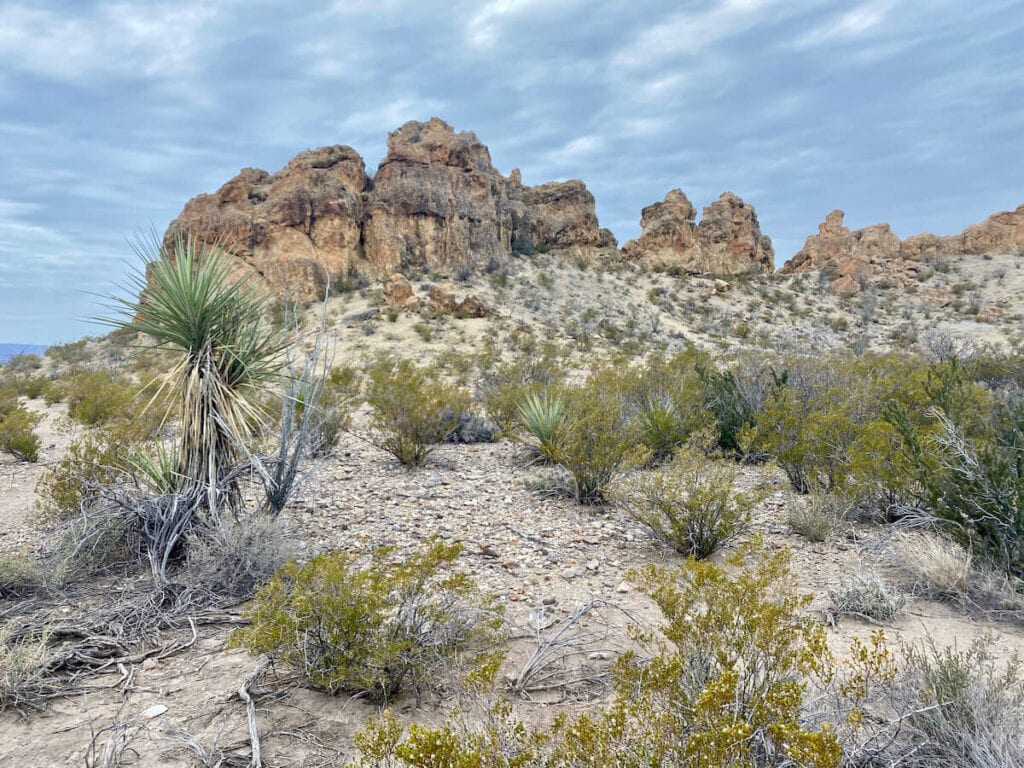
The Layout of the Park
As I was doing research on Big Bend and planning out my trip, I realized how big the park is! Big Bend National Park covers over 800,000 square miles. It takes about an hour and a half to drive from Boquillas Canyon on the east side to Santa Elena Canyon on the west side. Chisos Basin sits almost directly in the middle.
So, when you’re planning out your trip, I recommend choosing your activities and camping or lodging based on each region of the park. That way you can cut down on driving. If you have limited time, I liked Chisos Basin and Santa Elena Canyon the best – you could skip Boquillas Canyon if you are short on time.

Where to Stay
There are several options for where to stay in Big Bend including camping and hotels. I do recommend making a plan ahead of time, though – over the last few years, Big Bend has become increasingly popular and campsites do book out.
Big Bend National Park Camping
There are 4 established campgrounds located within Big Bend National Park. There are also primitive backcountry dispersed camping spots and several camping options outside the park.
Campgrounds within Big Bend National Park
All established campgrounds require advanced reservations that can be made up to 6 months in advance. There is no first come, first serve camping in Big Bend’s established campgrounds.
- Chisos Basin Campground: this is the most centrally located campground in the park, however trailers over 20’ and RVs over 24’ are not recommended because the road is narrow and campsites are small. No hookups are available at Chisos Basin Campground, but there are flush toilets, water, grills, and a dump station.
- Rio Grande Village Campground: located on the far east side of the park, this campground is set along the Rio Grande River among a large grove of trees. There are flush toilets, water, grills, and a camp store with a gas station, showers, and a laundromat attached.
- Rio Grande Village RV Park: This is the only campground with full hookups in Big Bend. Sites are available by phone reservation only (432-477-2293). Sites are located in a paved lot next to the camp store (and adjacent to the campground). Pets are allowed but must be leashed at all times.
- Cottonwood Campground: located on the far west side of the park, this campground is a quiet, desert oasis near the popular Santa Elena Canyon. This is the most remote campground in the park with no hookups, no dump station, and no generators allowed. Pit toilets, grills, and water are available at this campground.
Dispersed Camping in Big Bend National Park
Big Bend offers the unique option to car camp at primitive roadside spots or you can leave your car behind and backpack into the desert wilderness to camp.
Primitive roadside spots are located on backcountry roads – most require a vehicle with good clearance and/or 4×4. I drive a 2WD Ford van and had no issues getting to my roadside spot. The ranger at the Visitor Center was able to help me pick a site that would accommodate my van.
Roadside sites are small, flat gravel patches with no toilets, water, shade, or other amenities, but they offer amazing views and total solitude in the park. If you plan to disperse camp in Big Bend National Park, please note you will need to pack out all trash, know how to properly go to the bathroom outside, and Leave No Trace.
A $10/night permit is required for all primitive roadside and backcountry camping sites. Most sites can be reserved online up to 6 months in advance here. There are a handful of roadside sites that are only available to book in-person at either Panther Junction or Chisos Basin Visitor Center. I chose this option during my trip and was able to secure a spot by arriving at opening time (8:30am). This isn’t always the case, though, especially on weekends or anytime during the busy season.
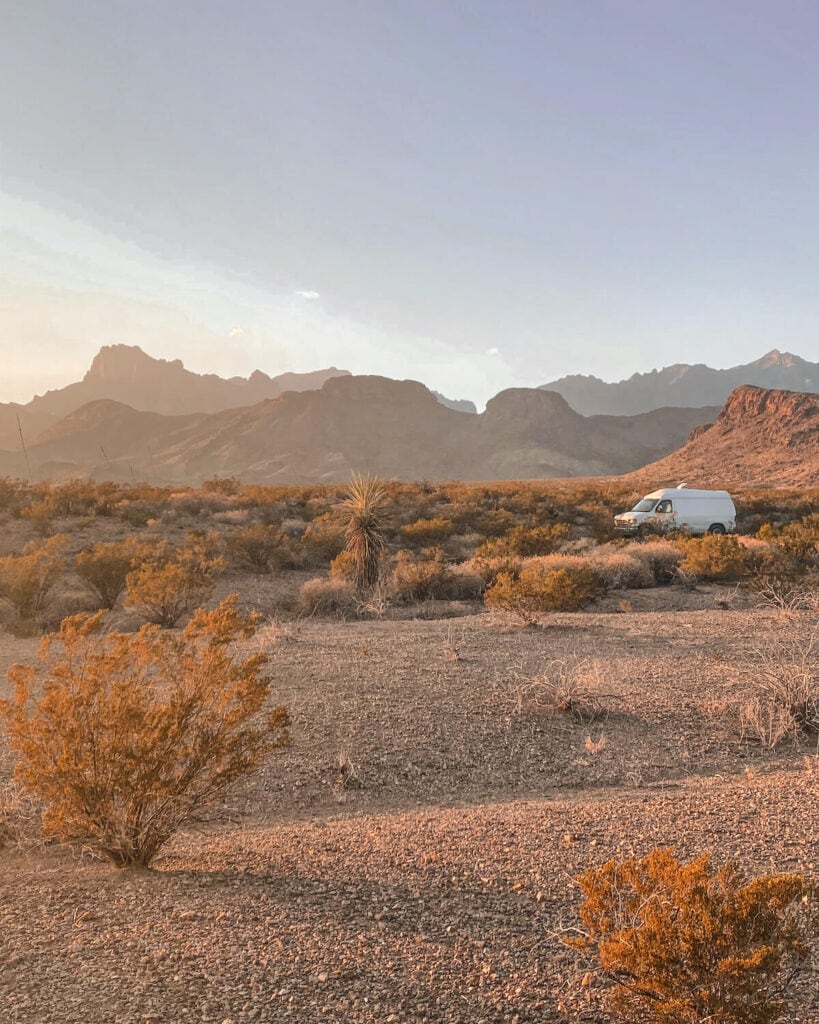
Camping Outside of Big Bend National Park
If you are unable to secure a campsite within Big Bend National Park, Big Bend Ranch State Park is close by and has a handful of campgrounds. I stayed here on my way out of the National Park and the campground I chose was nearly empty on a Saturday night.
Terlingua, Study Butte, and Lajitas also offer private campgrounds within an hour outside the park. A roundup of all lodging/camping options outside of Big Bend National Park can be found here.
#1 campsite finder app
Try The Dyrt PRO free for 30 days
Get a FREE 30-Day membership to The Dyrt PRO, one of our favorite apps for finding campsites.
Perks include:
• 5,000+ free camping locations
• 1,000+ campground discount network
• $0 extra booking fees
• Get reservations at sold-out campgrounds, and more
Use the code BEARFOOT to get 30 days free!
Big Bend National Park Lodging
Chisos Mountain Lodge
There is only one hotel in Big Bend National Park – the Chisos Mountain Lodge. It’s a pretty basic hotel (nothing fancy), but it does have great views and good access to hiking trails in the Chisos Mountains.
Located in the heart of the park at 5,400ft elevation, Chisos Mountain Lodge offers a variety of rooms and cottages with 360-degree mountain views. As the only non-camping option in the park, reservations are extremely limited and you need to book well in advance.
Hotels in Terlingua
Terlingua is a small town located about an hour from the park that has the largest accommodation selection outside of the park. Terlingua is a well-known ghost town with a true old Western feel – I recommend checking it out whether or not you plan to stay there.
The Starlight Theatre is a famous local watering hole known for its annual chili cookoff and frequent live music, and Espresso y Poco Mas is a great breakfast spot.
Best things to do in Big Bend National Park
I had a great time exploring all that Big Bend National Park has to offer. There are hundreds of miles of hiking trails, paddling opportunities on the Rio Grande River, scenic drives, and historical landmarks to visit – it truly has something for everyone!
Go hiking
Big Bend National Park has three distinct hiking regions: desert, mountains, and river. Elevation changes between these areas mean that you can choose your own adventure based on what terrain you prefer or what season you’re visiting.
Trails in the park range from short, paved paths that are under a mile to full-day – or even multi-day hikes.
My favorite hikes were:
For more info on these hikes plus other trail options, head to our full roundup of the best hikes in Big Bend National Park.
Drive the Ross Maxwell Scenic Drive
This 30-mile drive was one of the highlights of my trip. It showcases great views of the Chisos mountains and the vast Chihuahuan desert and ends at the beautiful Santa Elena Canyon. There are several overlooks along the road where I was able to stop and get out for a hike.
If you are up for adventure and have a vehicle with good clearance, consider taking Old Maverick Road back to the Western Park entrance. This road is only 14 miles but plan on a one-hour drive because it’s quite bumpy!
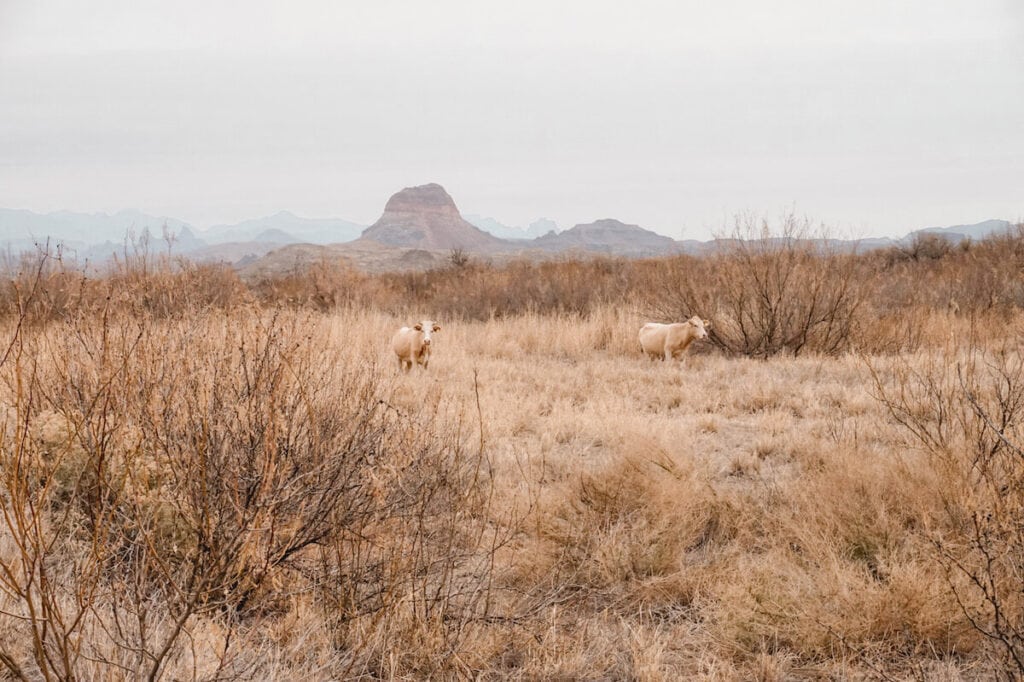
Visit Mexico via the Boquillas Crossing
Big Bend is the only National Park with a Port of Entry location. If you have a valid passport, you can visit the small town of Boquillas, Mexico during your trip to Big Bend. The border crossing is located on the east side of the park, close to Boquillas Canyon.
You can cross by rowboat ($5/person roundtrip) or by wading through the river if the water level is low enough. There are many restaurants, food stalls, and vendors selling local handicrafts. I didn’t have time to visit Boquillas, but it’s such a unique opportunity to do while visiting a National Park, and I can’t wait to return to check it out.
Tip: US currency is accepted in Boquillas so no need to exchange money ahead of time.
Paddle the Rio Grande River
Guided or self-guided trips on the Rio Grande River are a great way to see Big Bend National Park from a different perspective. The river marks the border between the US and Mexico and you can choose floats from half-day to multi-day excursions. If you plan to do an independent river trip, be sure to read the regulation and permit information.
Visit the Hot Springs Historic District
Located along the Rio Grande on the east side of the park, the Hot Springs Historic District is a step back in time. Here, you can see and learn about the human history of the area dating back thousands of years.
I enjoyed looking at rock art on the limestone cliffs, learning about the Langford family that inhabited the area in the early 1900s, and soaking in natural hot springs that flow right next to the river.

Safety Tips for Visiting Big Bend
Because Big Bend National Park is so remote and has a harsh desert climate, it’s important to be prepared for your trip. I made sure to stock up on everything I needed before I made my way into the park.
Here are a few safety tips to keep in mind when planning your trip:
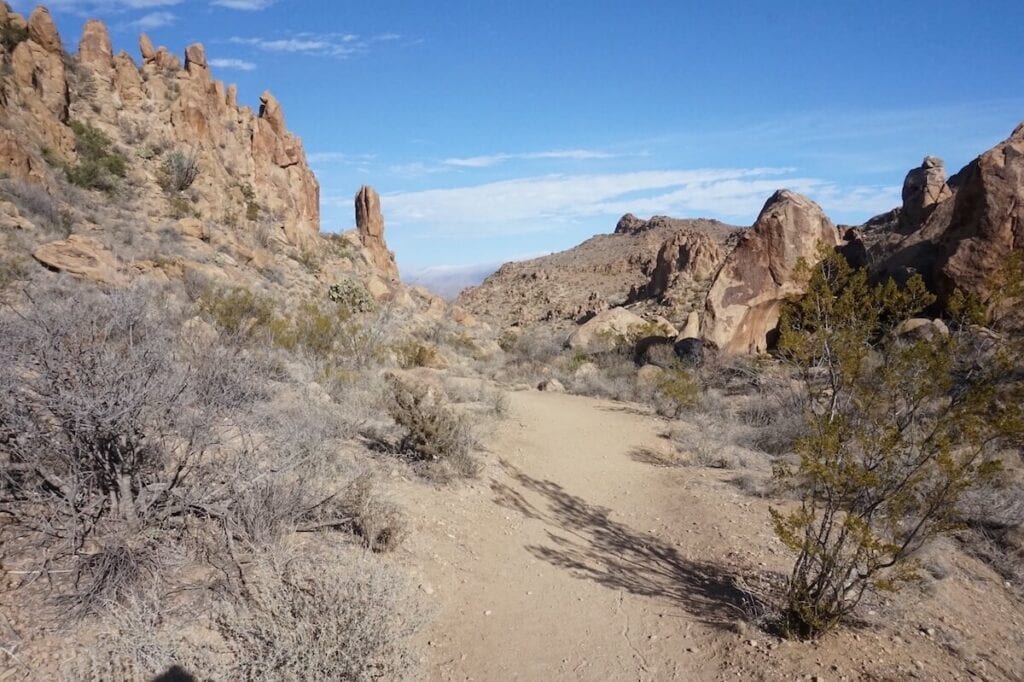
Big Bend National Park FAQs
Entry into Big Bend National Park is $30 per vehicle. This pass is valid for 7 days. If you’ll be visiting more National Parks throughout the year, I recommend getting the Annual National Parks Pass which, for $80, gives you access to all National Parks around the US.
Camping fees vary depending on the campground.
Cell service is pretty spotty in Big Bend National Park. Areas where there is reliable service are the Chisos Basin area and Panther Junction.
That depends on how much you want to see and do! I recommend spending at least three days exploring Big Bend. If you want to really get to know the park or to go out on a multi-day excursion, 5-7 days is ideal.
Yes, Big Bend is open year-round. However, summers can be extremely hot.
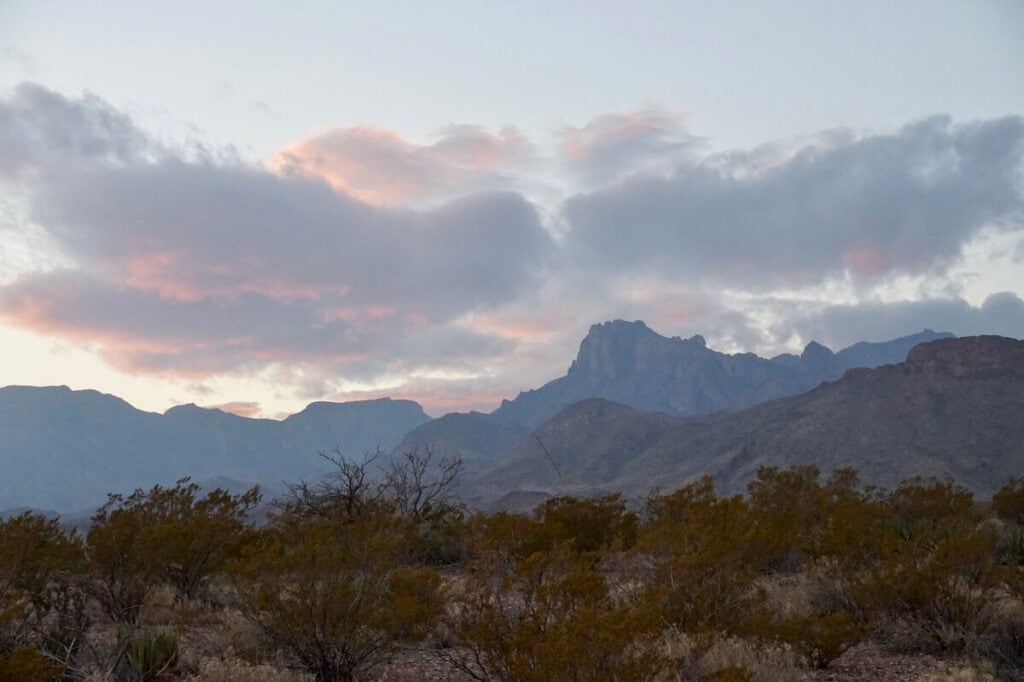
More Southwest National Parks
Save this post to Pinterest
Have you been to Big Bend National Park or are you planning a trip there? Share your questions, comments, and experiences in the comments below!

